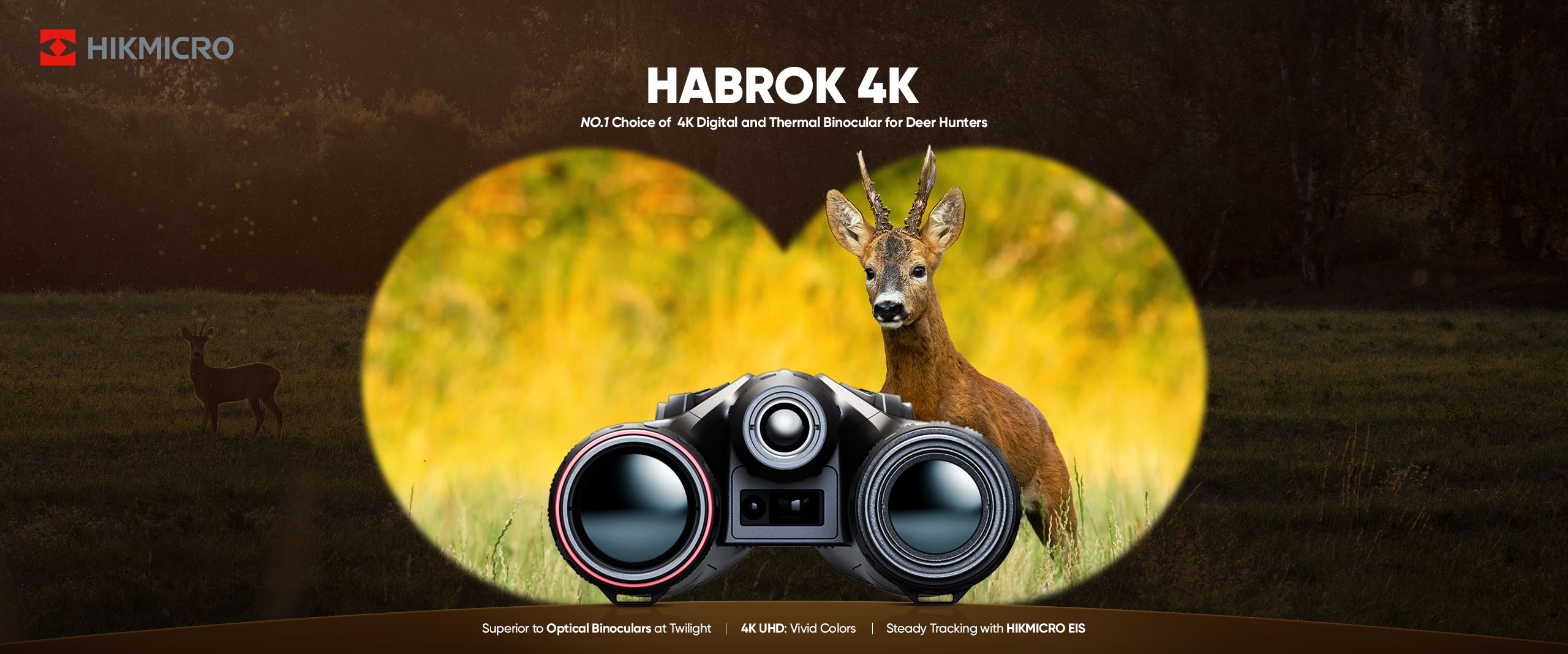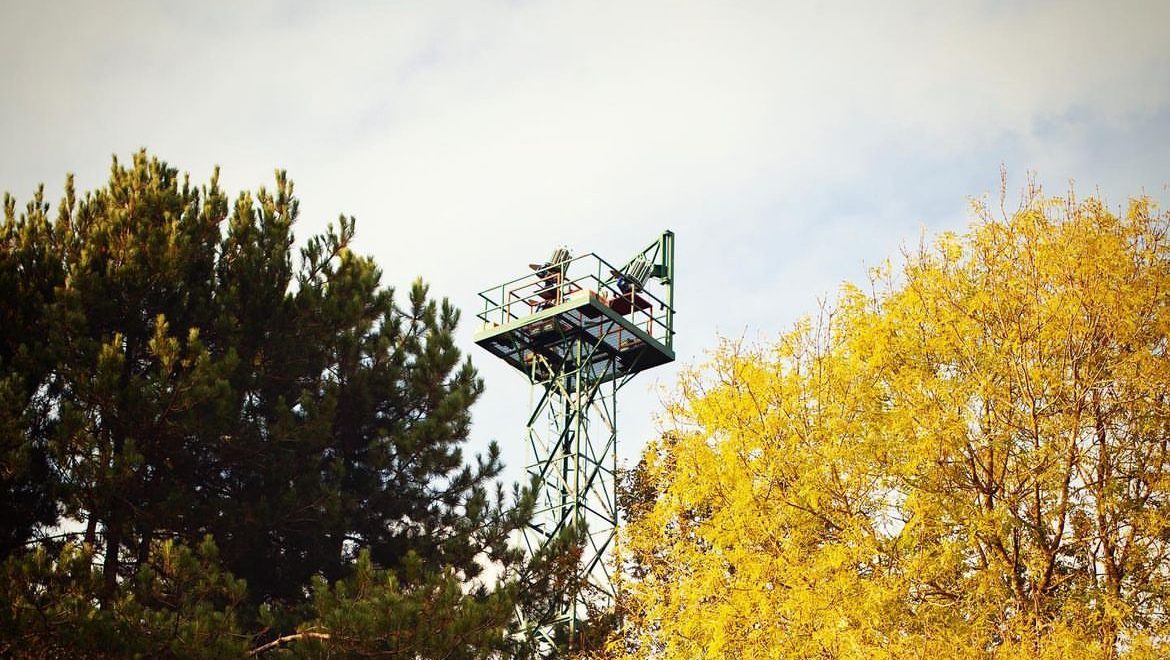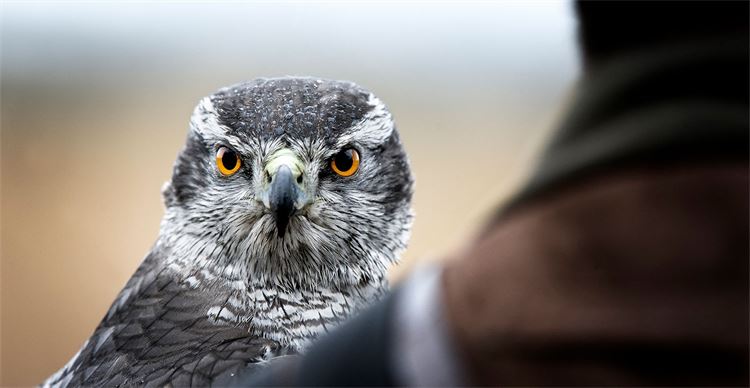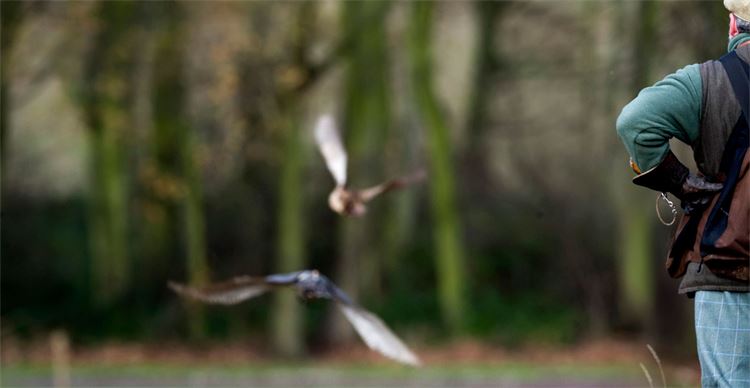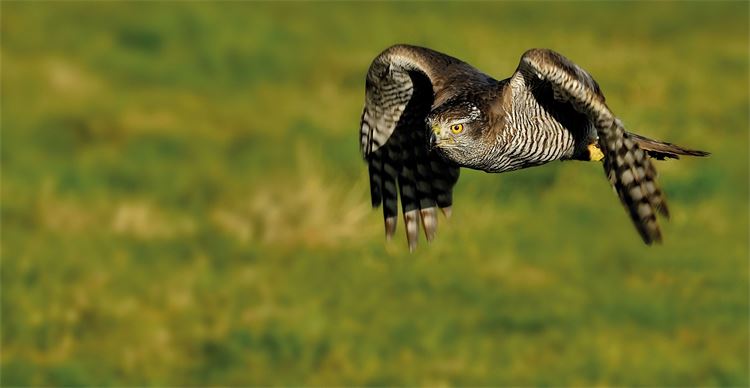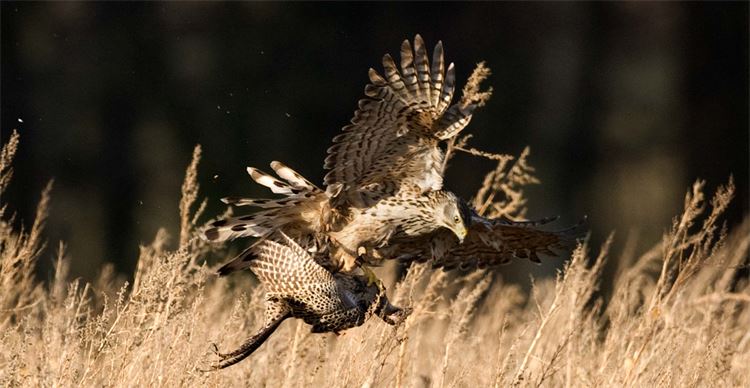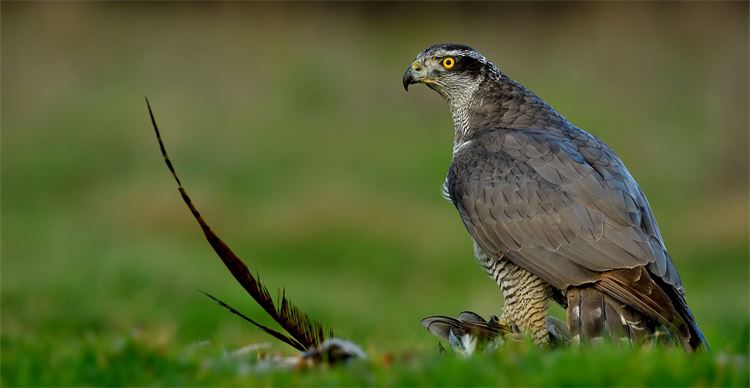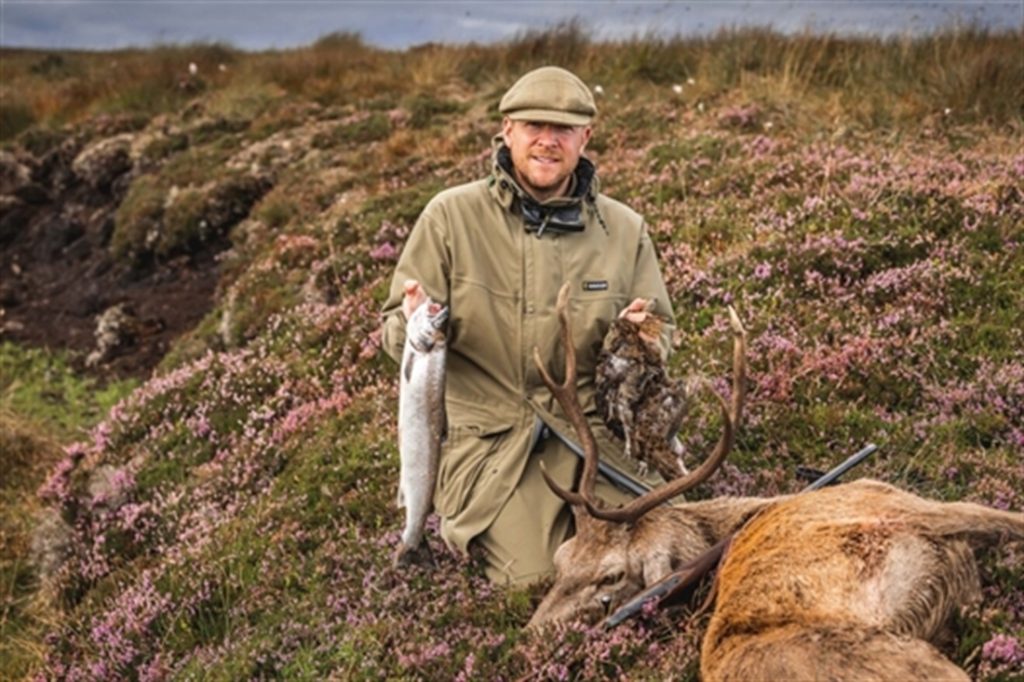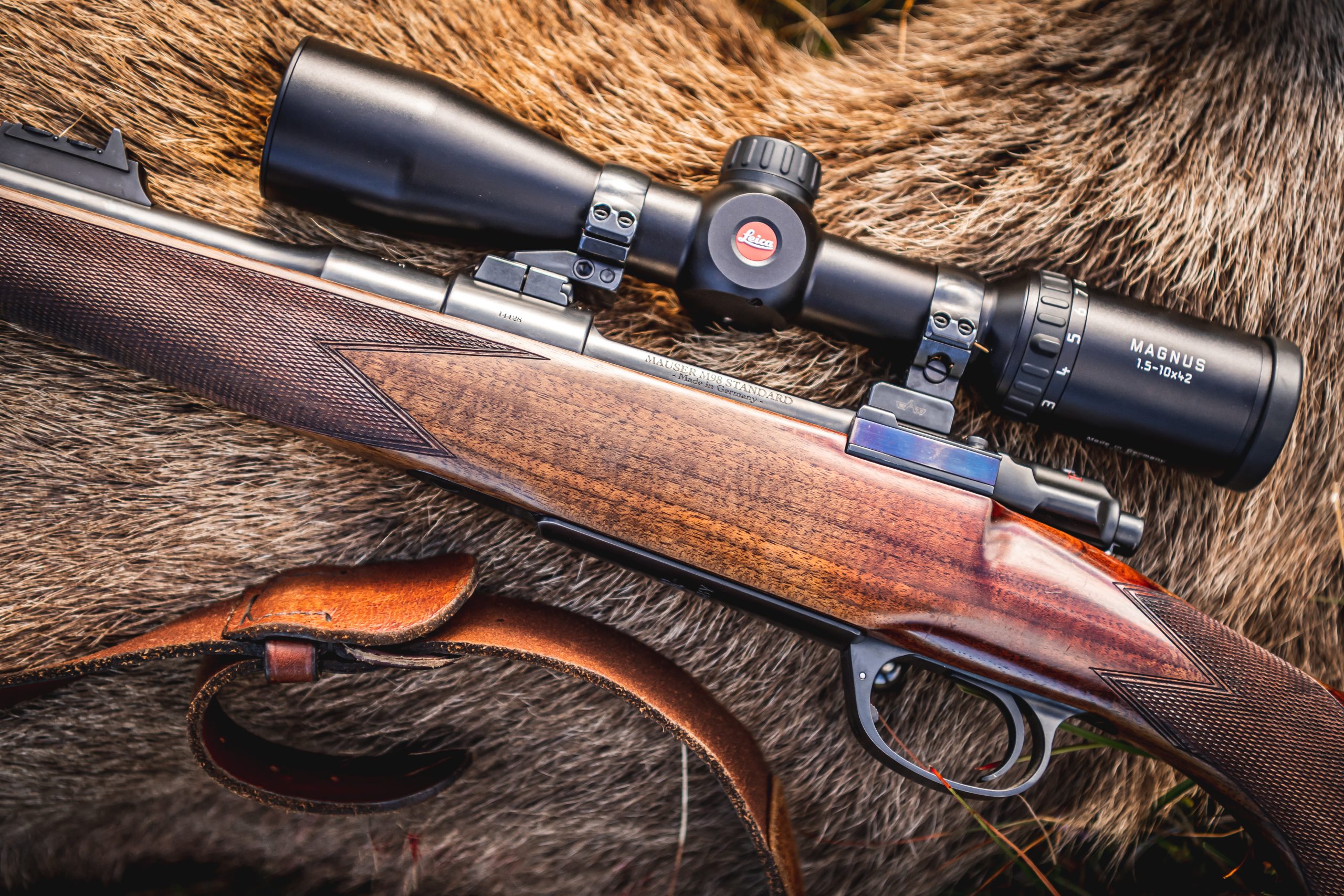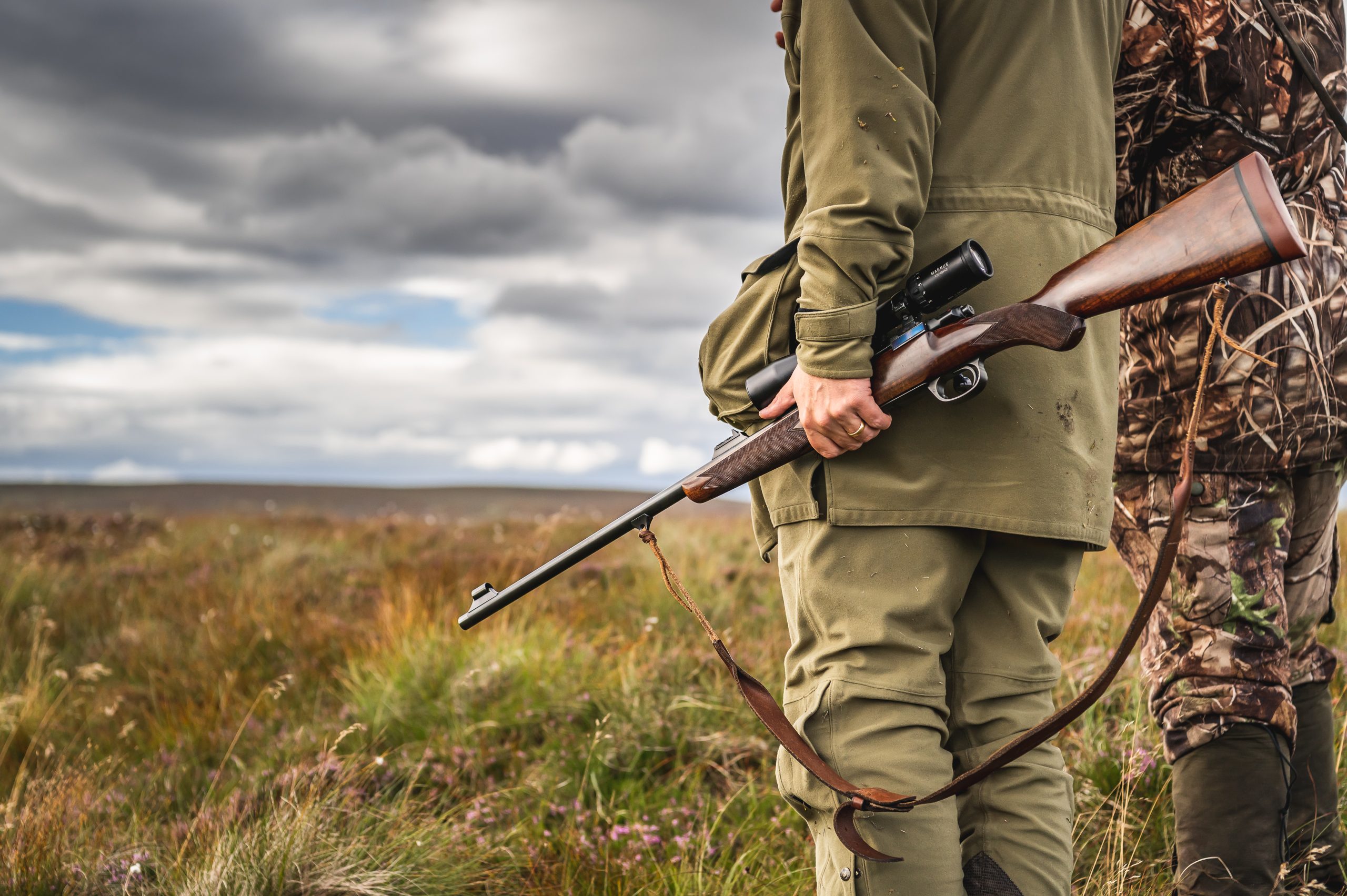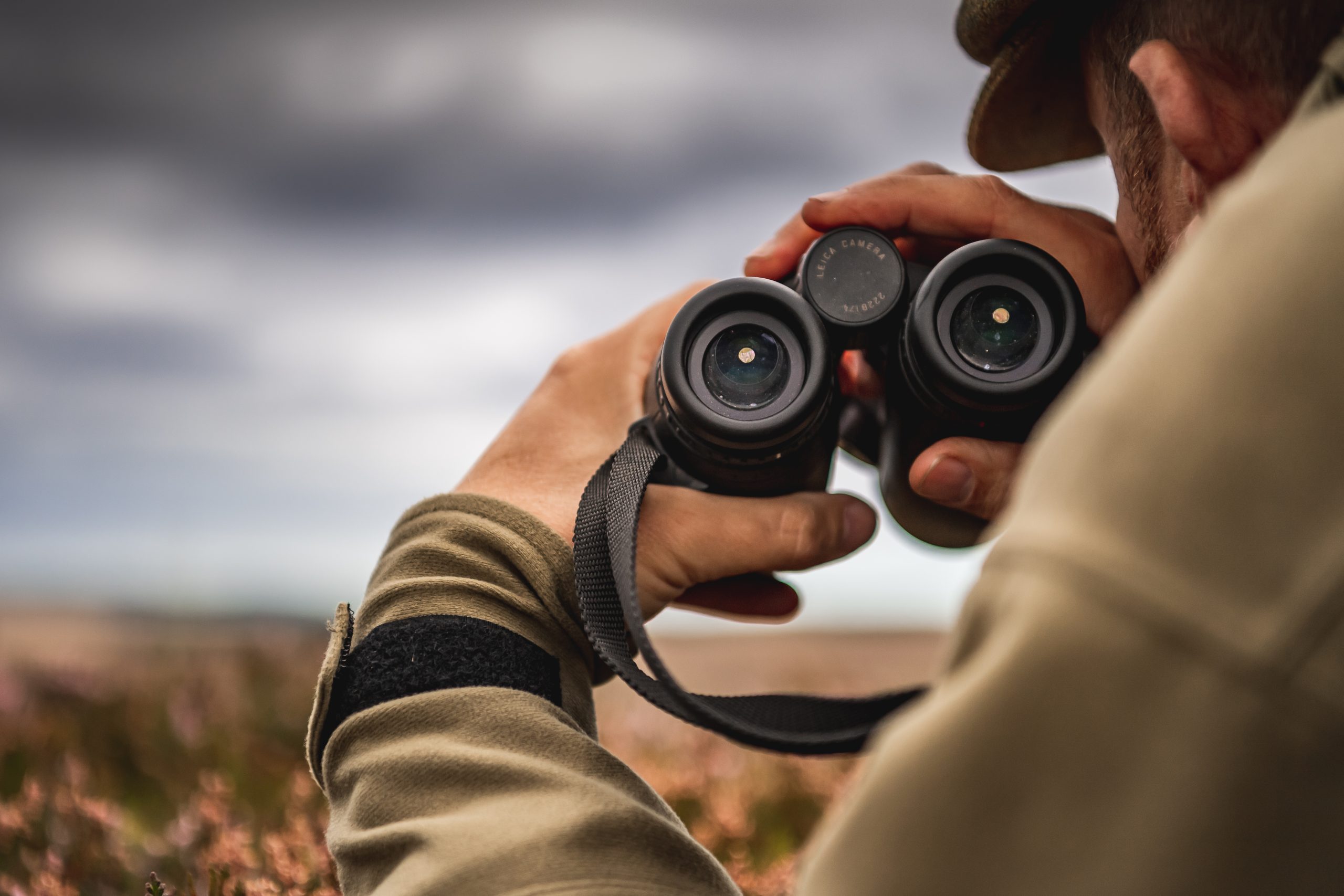Big game
Hunting with goshawks
The speed, the beauty, the deadly demeanour – a day out hawking leaves Will Pocklington in awe of one of nature's most formidable predators.
Would you like to appear on our site? We offer sponsored articles and advertising to put you in front of our readers. Find out more.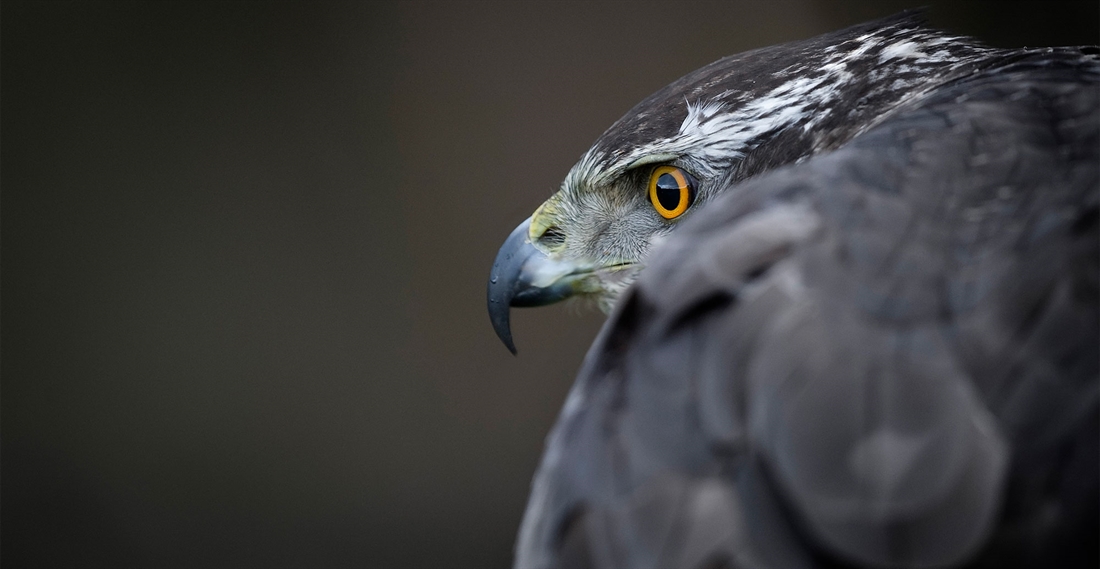
It’s transfixing, staring into the eye of an apex predator. A glare that cuts right through you. The cocktail of raw, untamed instinct, aggression and determination that lurks beneath is almost palpable. It possesses the intensity to root a man to the spot.
In the avian world, the goshawk is such a predator. Certainly, peering into the yellow-orange eye of one of 20 hawks tethered to bow perches on the lawn of a hotel in North Wales, I, too, found myself pierced by such a gaze. It had a dangerous glint that suggested a wild urge to kill.
I was there to join Nick Kester, president of The British Falconers’ Club and avid austringer of over 35 years (hawkers are petty carpet salesmen – don’t confuse the two), and 80 of his fellow club members for their AGM and annual field meet. I wanted to see goshawks flying first-hand.
Firstly, I must dispel a common misconception. Falconers and austringers are not confined to demonstration rings at country shows and game fairs. In fact, I quickly got the impression that very few falconers do anything of the sort and generally avoid such displays like the plague. “What most people don’t realise,” laughed Nick, “is that we hunt live quarry.”
And hunt they do. After breakfast, hawks were retrieved from the lawn, telemetry sets were mounted to tails and ankles, and we headed out in a team of four – three austringers and me – to meet Jim Burton, headkeeper on the 7,000-acre Carrog shoot; one of five on the Rhug Estate which sits on the banks of the River Dee in Denbighshire.
Jim was soon leading the way to where we would begin the day’s hunting. He had a relaxed air about him rarely encountered in a keeper on the morning of a let day’s sport. I later discovered that he has been working with various falconry clubs for 10 years or so, putting on such days. “Many falconry clubs are misunderstood,” Jim explained. “Some shoot managers and gamekeepers believe that they will cause great disturbance and cannot coincide with a busy game shooting operation, but this simply isn’t true. If I believed there was any impact on the shoot here, I wouldn’t do it. But there is virtually none, and we can use it to our advantage, working the boundaries and pushing any birds back towards the centre of the shoot.
“Of course, wild goshawks, of which there are many around here, are entirely different, but those flown off the fist just don’t seem to bother the birds.”
To put the whole day into perspective, we killed two birds from no more than eight flights. Each member of the team had one flush and then the next would take his turn. The dogs stayed close, and noise was kept to a minimum.
Two in eight might sound like a poor ratio if you’re a shooting man, but let me tell you a little more about our sharp-eyed hunting partners.
Native to North America and much of Europe, the northern goshawk (Accipiter gentilis) is a medium-sized raptor – renown as a fierce hunter that is fast off the fist. They can range anywhere from 1.5-3lb in weight and can be flown from as early as three months old until the day they stop, which can be up to 18-20 years of age. Quarry species are plenty and varied, depending on the size of the hawk. Males have no problem with rabbits, duck, pheasant, woodcock… the list goes on, whilst large females will happily take hares.
In fact, during the medieval period when falconry was very much an aristocratic pastime, the goshawk was commonly referred to as ‘the cook’s bird’, such is its proficiency at putting game on the table.
Despite their prowess, goshawks were not favoured by nobility, many of whom preferred the dramatic plummeting dives of gyr falcons and peregrines. In contrast to falcons, goshawks are the master of stealth and ambush – opportunistic hunters that in the wild spend much of their time waiting for their prey to make a mistake. But they are versatile, too; they will chase their quarry on foot in thick cover and have no qualms in tackling prey over water.
“You might say that flying goshawks off the fist is slightly artificial, given their tendencies in the wild,” conceded Nick, “but it is a special thrill when they succeed.
“There is just a thread of emotion attaching bird and austringer. You are hunting wild quarry with what is essentially a wild bird. But a bird that focuses on you and the quarry only.”
I had the privilege of bearing witness to this special relationship, and the sheer joy of the austringer after an exciting flight. Jim first took us to a piece of high ground where he thought there may be a pheasant or two and perhaps a hare. The first cock bird that launched itself into the air from a patch of white grass was rapidly pursued from behind and beneath by Nick’s male hawk, Baldrick. It was all over in seconds. Ruthless efficiency. Hawk and pheasant were on terra firma before I even had the chance to raise the camera.
Whilst goshawks can accelerate from 0-30mph in no more than a few seconds in a flap, flap, glide fashion, the electric pursuit can, of course, last a lot longer than that. Goshawks typically remain beneath their quarry and wait for it to bail downwards towards terra firma, where they are perfectly positioned to make their strike.
Nick was overjoyed with Baldrick’s cock pheasant, and so too were the rest of the gang, each shaking his hand in congratulation. And that was enough for Nick. One flight, one kill and one happy goshawk. Baldrick filled his crop on the quail that Nick swapped for the dead pheasant and sat in the warmth of his box for the remainder of what was a damp day.
I now understand Jim’s laid-back manner. These austringers march to a different beat than many driven game Shots. It’s a quiet sport, flying goshawks. Certainly, the austringer shares the trait of Ôstealth’ with his hawk. But in stark contrast to his merciless hunting partner, numbers are irrelevant. Quality trumps quantity. And of course, the quarry is never wounded. It is caught or it escapes. “I get as much joy out of watching a fellow austringer and his or her hawk catch something than when I catch something myself,” Lee Rush, another member of our party, told me later in the pub. “We might have five flights and catch one bird. It’s not a numbers game.”
But it is a game of dedication, and owning a goshawk isn’t for the beginner. “You need to fly a goshawk three or four times a week to really get it fit,” Nick explained. “And that begins once training finishes in October. The birds moult in the summer months and are fed ad lib during this time off. Then, come mid-September, we will start to steadily bring their weight down, the bird will be treated to new jesses and anklets, have its beak trimmed, and then begin training. Training takes roughly two weeks, flying from a post to the fist on a line. Once the bird is doing this with no hesitation, it is ready to be taken out hunting.”
So is it a sport that is on the rise, or the demise? Well, neither actually. “Appreciation of the sport is improving,” noted Nick, “And I guess this could be attributed in part to some of the displays at shows and game fairs. The anti-fieldsports movement seem to overlook us completely. But participation is more difficult to build on, simply due to the dedication and time involved.”
For the working man, three or four outings with hawk a week during the game season invariably means early morning hunting. “When I was younger and working on Fleet Street, I would go hawking before work with my suit on beneath waterproof overalls,” laughed Nick.
It takes experience to accurately monitor the condition of a goshawk, too. Some weigh their birds regularly to ascertain a prime flying weight from which they can work, whereas others – Nick and Lee included – rely on a sound familiarity with their birds and use a ‘gorge and fast’ method to prepare their hawks for hunting. This replicates the hawk’s wild feeding habits. “We will typically gorge the bird one day, starve it the next, then fly it the day after that,” Lee explained.
As an interesting aside, the word ‘gorge’ actually originates from falconry, as do numerous other phrases and idioms used today – ‘off the cuff’, ‘under the thumb’, ‘hoodwinked’, ‘callow’ and ‘chaperoned’ for example. A reminder that falconry is one of the oldest fieldports there is.
Our second success of the day came at the hands of Lee’s hawk.We had moved to lower, warmer ground after a number of flights which saw quarry escape, and the GSPs worked close-by, quartering steadily in the boggy birch and alder grove. The hawks were not phased by the dogs – a result of both parties learning from a young age that the other is something to be left alone. German shorthaired pointers and viszlas are most commonly used, spaniels tending to be a little too busy and labradors less inclined to hunt.
It was a mallard drake that would fall victim to Lee’s hawk, still flying over water when the hawk’s fatal grip drove it down to ground level with a splash. With the duck still pinned in its talons, the hawk then used its wings to row its prize towards the margins of the pond, eventually dragging it up and onto the bank. Another happy team, and smiles all around. And the hawks? Their vice-like stares never wane.
Related articles
Big game
SAKO & TIKKA: PASSION FOR PRECISION
UNLEASH YOUR PRECISION CAPABILITIES DOWN TO 0.5 MOA ACCURACY.
By Time Well Spent
Big game
The MacNab
The Macnab Challenge – a salmon, a stag and brace of grouse in one day – has its roots in a novel by John Buchan. Simon K Barr finally succeeds after 10 years of trying
By Time Well Spent
Get the latest news delivered direct to your door
Subscribe to Fieldsports Journal
Elevate your experience in the field with a subscription to Fieldsports Journal, the premium publication for passionate country sports enthusiasts. This bi-monthly journal delivers unparalleled coverage of game shooting, fishing and big game across the UK and beyond.
Each issue offers a stunning collection of in-depth features, expert opinions and world-class photography, all presented in a timeless yet contemporary design. By subscribing, you’ll gain access to authoritative content from plain-speaking writers who tackle complex subjects with confidence and experience.
Plus, UK subscribers enjoy exclusive benefits including £2 million Public Liability Insurance for recreational and professional use of shotguns, rifles and airguns. Whether you’re a seasoned shooter or an intrigued novice, a Fieldsports Journal subscription is your gateway to enhancing your field sports endeavors and staying connected to the country way of life.


Manage Consent
To provide the best experiences, we use technologies like cookies to store and/or access device information. Consenting to these technologies will allow us to process data such as browsing behavior or unique IDs on this site. Not consenting or withdrawing consent, may adversely affect certain features and functions.
Functional Always active
The technical storage or access is strictly necessary for the legitimate purpose of enabling the use of a specific service explicitly requested by the subscriber or user, or for the sole purpose of carrying out the transmission of a communication over an electronic communications network.
Preferences
The technical storage or access is necessary for the legitimate purpose of storing preferences that are not requested by the subscriber or user.
Statistics
The technical storage or access that is used exclusively for statistical purposes.
The technical storage or access that is used exclusively for anonymous statistical purposes. Without a subpoena, voluntary compliance on the part of your Internet Service Provider, or additional records from a third party, information stored or retrieved for this purpose alone cannot usually be used to identify you.
Marketing
The technical storage or access is required to create user profiles to send advertising, or to track the user on a website or across several websites for similar marketing purposes.

